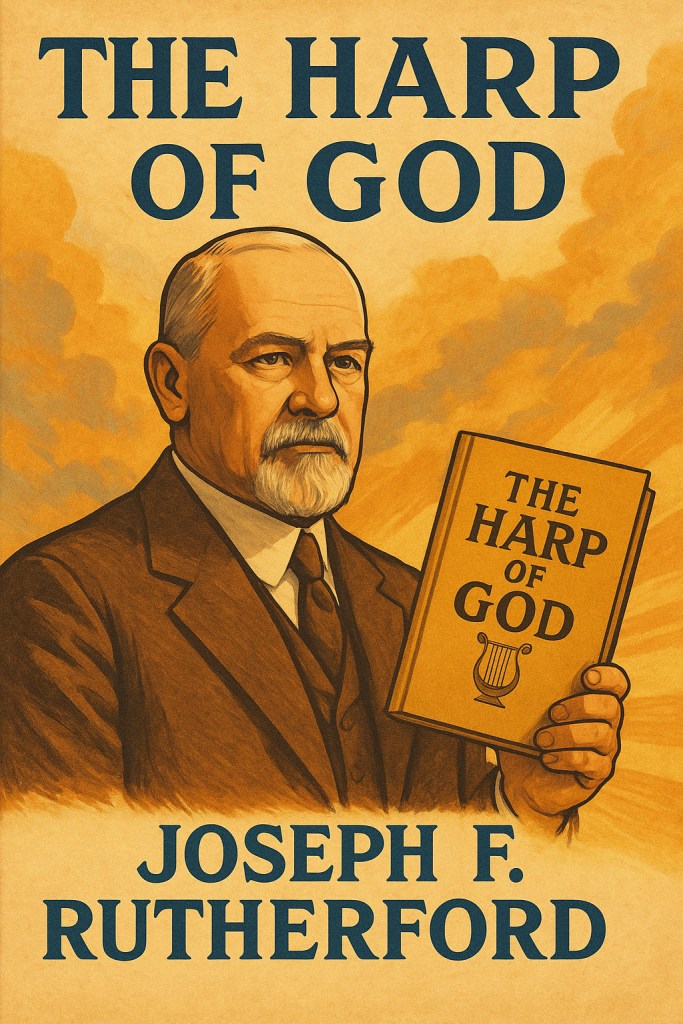
📘 The Harp of God (1921) – Summary & Analysis
🔹 Title:
The Harp of God: Proof Conclusive That Millions Now Living Will Never Die
🔹 Author:
Joseph F. Rutherford
🔹 Publication Year:
1921
🔹 Purpose of the Book:
Written as a Bible study guide for the public, this was Rutherford’s first major book after Russell’s death. It presented key Watch Tower doctrines with simpler explanations and a more urgent tone, emphasizing the nearness of Armageddon, the resurrection hope, and the promise that “millions now living will never die.” It symbolized a shift from Russell’s typological teaching to Rutherford’s legal-style preaching.
🆓 Public Domain Use
The Harp of God, first published in 1921 by Joseph F. Rutherford, is in the public domain under U.S. law. No copyright renewals were filed, and the work may be freely copied, shared, reproduced, or reformatted without permission or royalty.
1921_The_Harp_of_God❗ Doctrinal Issues & Revisions
| 🔍 Topic | 📖 What Rutherford Taught (1921) | ⚠️ Later Concern or Change |
|---|---|---|
| Invisible Return of Christ | Christ returned invisibly in 1874. | Changed in 1943 to 1914 under later “new light.” |
| “Millions Now Living…” | Taught that millions alive in the 1920s would never die but live through Armageddon. | Those people all died — the prophecy failed. |
| Resurrection Timeline | Claimed Ancient Worthies (like Abraham) would return soon to live on Earth. | Never happened; similar to failed 1925 expectation from earlier publications. |
| Simplified Doctrine | Moved away from Russell’s typology to straightforward explanations. | Marked a break from Russell’s detailed interpretations of symbols and types. |
| Opposition to Religion | Declared false religion as Babylon and emphasized judgment. | Tone became increasingly militant and confrontational under Rutherford’s rule. |
Final Thoughts
Dear fellow believer, The Harp of God was a sincere effort to help people understand Bible truth in simple terms during a time of uncertainty. Brother Rutherford’s goal was to show the nearness of Jehovah’s Kingdom and the hope for life without death. While the book encouraged faith in God’s promises, we now recognize that many of its bold declarations never came true. As we continue to seek truth rooted in Scripture—not just tradition—we lovingly review these past teachings with humility, knowing our loyalty belongs to Jehovah, not to any man or organization.
